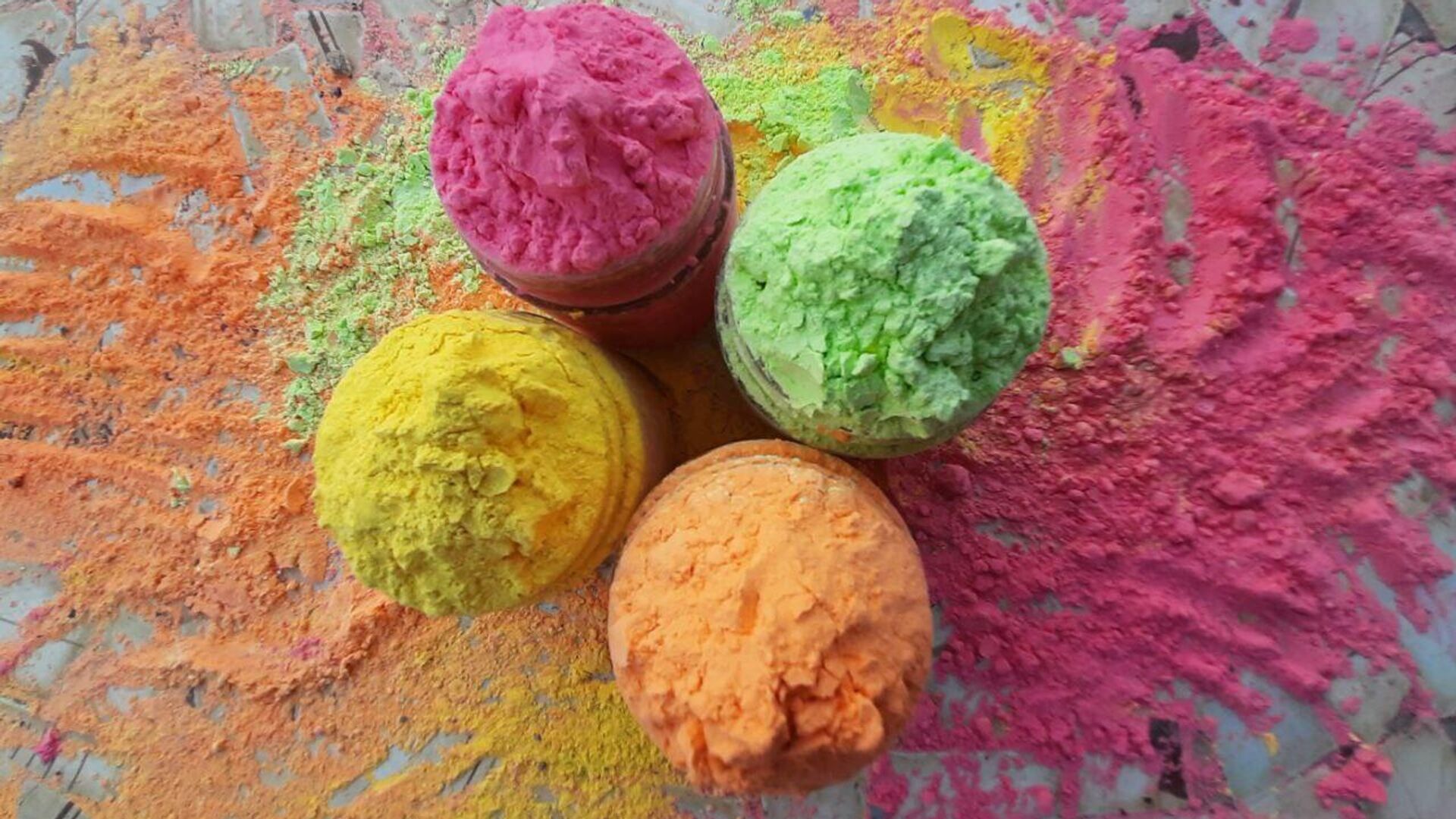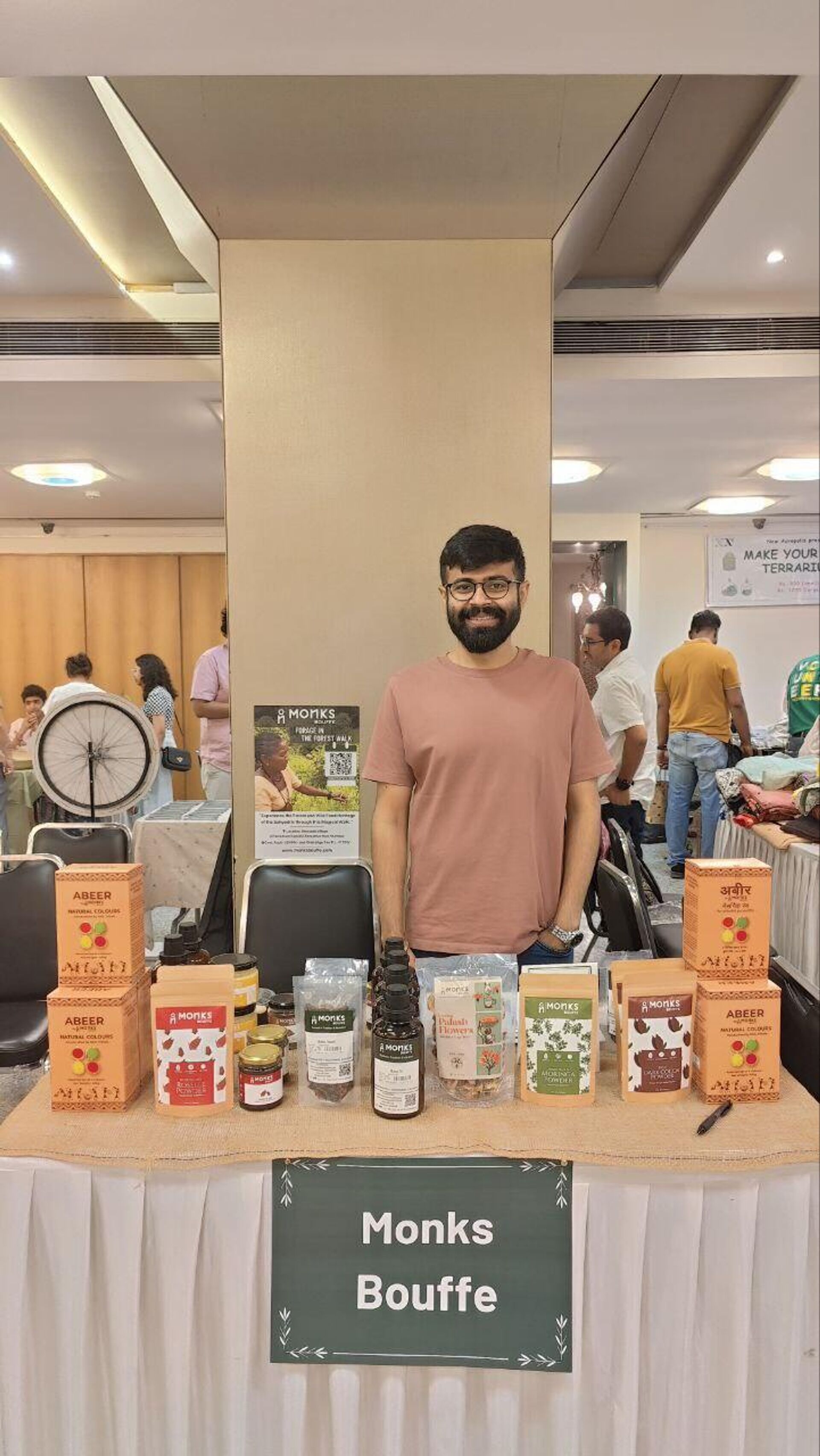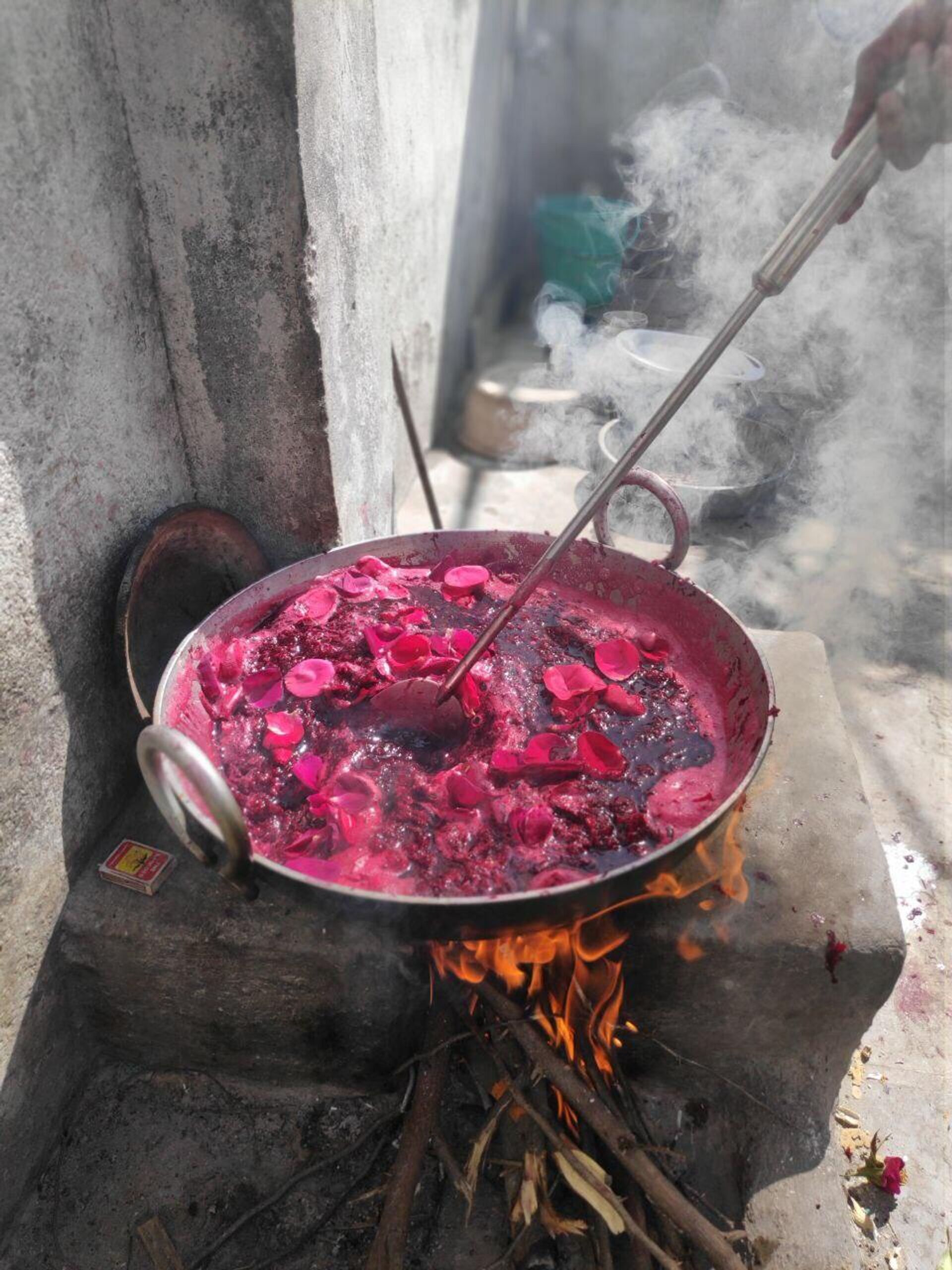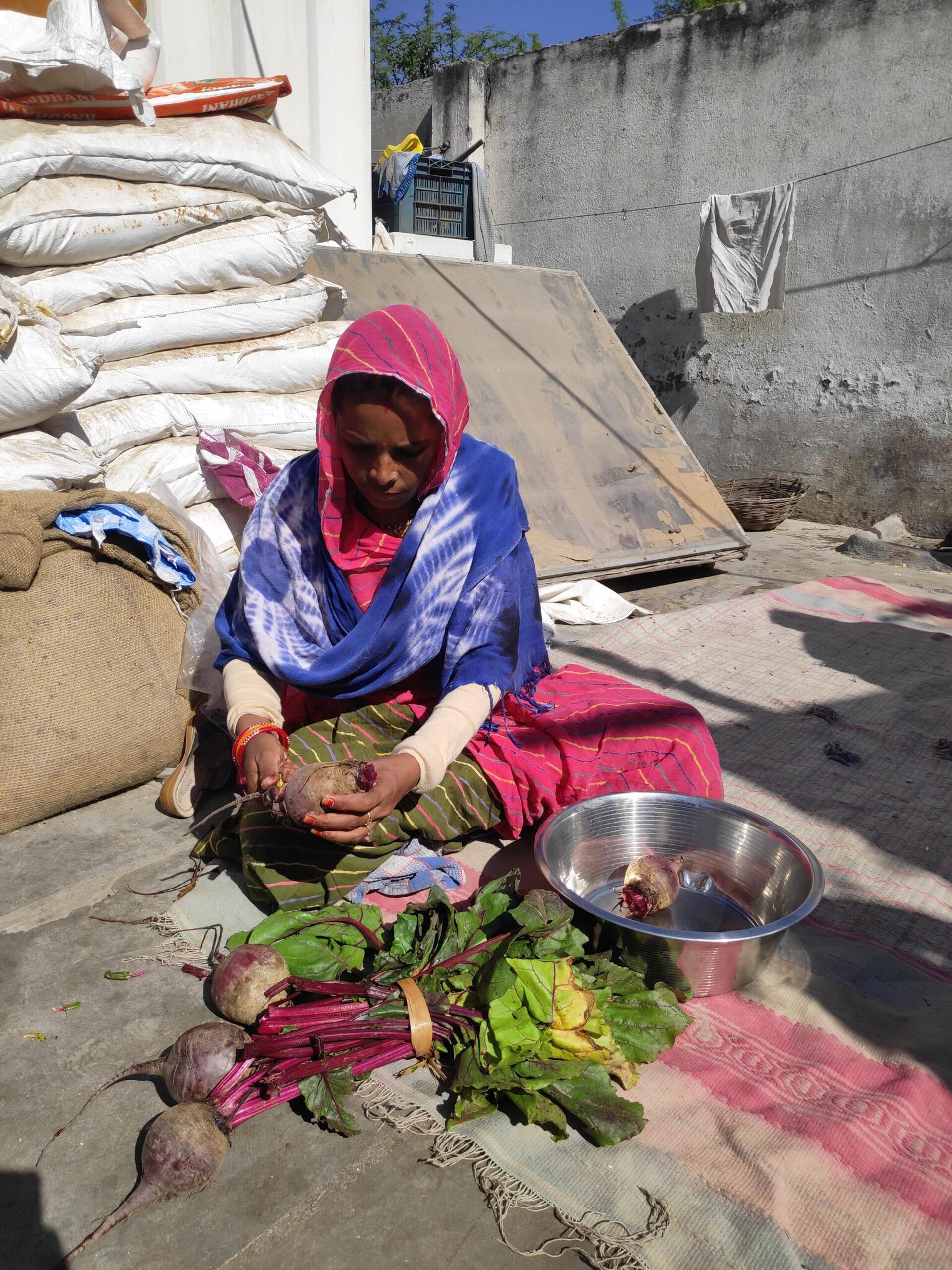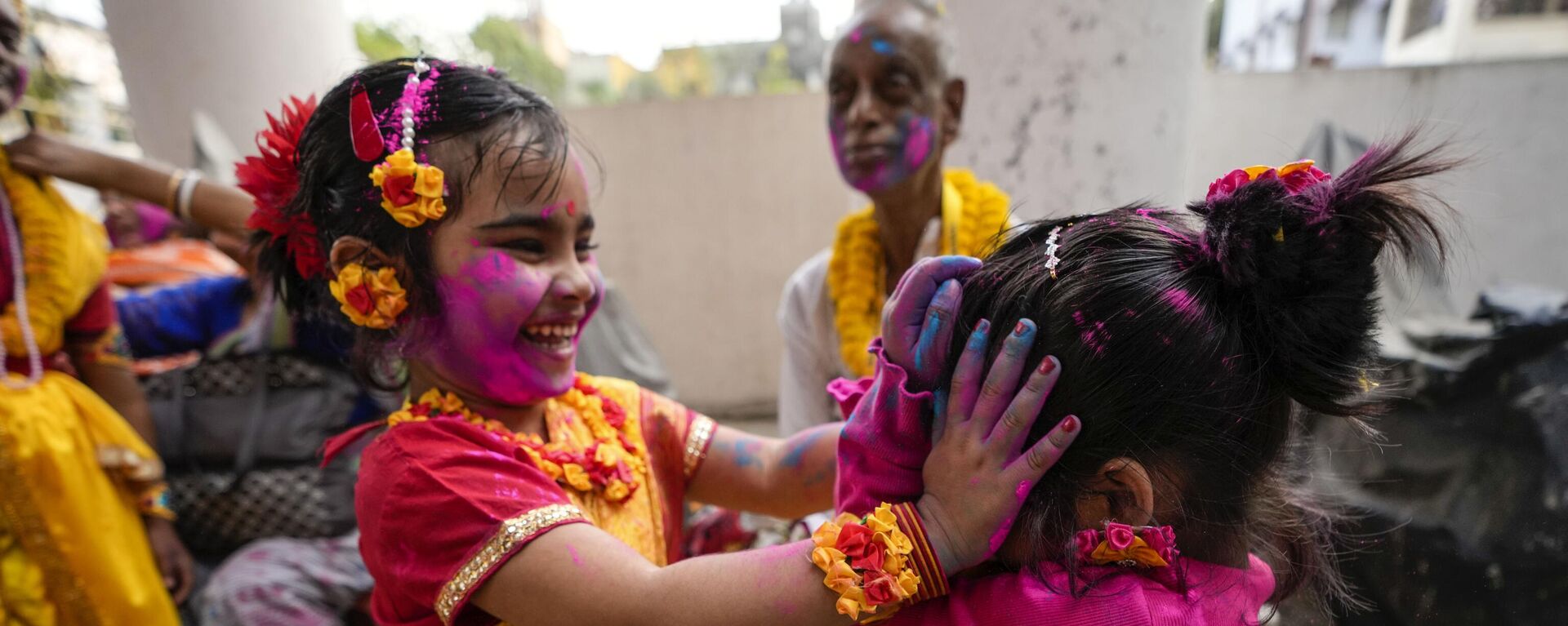https://sputniknews.in/20240325/bhil-tribals-of-rajasthan-preserve-ancient-craft-making-eco-friendly-holi-colors-6936576.html
Bhil Tribals of Rajasthan Preserve Ancient Craft: Making Eco-Friendly Holi Colors
Bhil Tribals of Rajasthan Preserve Ancient Craft: Making Eco-Friendly Holi Colors
Sputnik India
Holi, the festival of colors, is celebrated with great enthusiasm across India. However, the use of harmful colors containing chemicals and pollutants often results in damaged skin, hair, severe allergies, and other side effects.
2024-03-25T13:58+0530
2024-03-25T13:58+0530
2024-03-25T19:32+0530
sputnik exclusives
india
holi
hindu festival
environment
rajasthan
mumbai
health
health issues
tribal community
https://cdn1.img.sputniknews.in/img/07e8/03/19/6936862_0:19:1280:739_1920x0_80_0_0_1123647d008d7dbd1c62e9043014ce74.jpg
Meet Mumbai-based Gaurang Motta and his brother Saurabh, the co-founders of 'Monks Bouffe', who, along with Rajasthan’s Bhil tribe members, have been working towards creating colours that are natural, eco-friendly, and edible too.They started ‘Abeer Holi Colours’ which are made up of flowers and vegetables, and no other additives.The Origins of 'Monks Bouffe'It all started seven years back when the Motta brothers were exploring ways to empower various tribal communities by working with them on their art.One such art was making Holi colours using edible ingredients such as spices, vegetables, fruits, and flowers.That's when the Motta brothers decided to carry forward this brilliant traditional skill which is culturally associated with the Bhil Tribals and many other tribal communities across the country.Process Behind Making Edible, Eco-Friendly ColoursFrom beetroot, rose, marigold and maze flowers to black plums and turmeric, several ingredients are used to make Holi colours naturally.Much before the Holi festival, the preparations kick start much in advance.“Beetroot is also added in small quantities which the tribals grow themselves and all of these ingredients are put together. They are shredded, dried and then mixed with water and boiled in large pans, differentiating between each colour. Once the boiled mixture is ready, they are mixed with the maize flower in a specific proportion and put flat on plastic sheets or banana leaves. Once that mixture is dry, it is broken down by hand into smaller pieces, and then it goes to a flour mill and is converted into a powder,” Motta added.Once the colours are prepared, the Motta brothers buy them from the tribals, brand them, package them, and then connect them to various cities across India.Not only are these colours organically created but also are economic, making it easier for many other communities to follow and create.Motta added that their venture is also important as it provides economic support to the current generation of the tribal community, preventing them from migrating to cities in search of labour jobs."Both cultural and economic value both get associated with this,” Motta concluded.
https://sputniknews.in/20230308/holi-how-do-indians-celebrate-this-vital-holiday-1086871.html
india
rajasthan
mumbai
Sputnik India
feedback.hindi@sputniknews.com
+74956456601
MIA „Rossiya Segodnya“
2024
Sangeeta Yadav
https://cdn1.img.sputniknews.in/img/07e6/0c/0f/110602_0:0:641:640_100x100_80_0_0_c298016a79eb02ef8caa9d1f688c12a5.jpg
Sangeeta Yadav
https://cdn1.img.sputniknews.in/img/07e6/0c/0f/110602_0:0:641:640_100x100_80_0_0_c298016a79eb02ef8caa9d1f688c12a5.jpg
News
en_IN
Sputnik India
feedback.hindi@sputniknews.com
+74956456601
MIA „Rossiya Segodnya“
Sputnik India
feedback.hindi@sputniknews.com
+74956456601
MIA „Rossiya Segodnya“
Sangeeta Yadav
https://cdn1.img.sputniknews.in/img/07e6/0c/0f/110602_0:0:641:640_100x100_80_0_0_c298016a79eb02ef8caa9d1f688c12a5.jpg
gaurang motta, saurabh, 'monks bouffe', rajasthan’s bhil tribe, eco-friendly, edible, abeer holi colours, flowers, vegetables, chemical-laden, environment friendly, flower, how to make eco-friendly colours at home, dying art,
gaurang motta, saurabh, 'monks bouffe', rajasthan’s bhil tribe, eco-friendly, edible, abeer holi colours, flowers, vegetables, chemical-laden, environment friendly, flower, how to make eco-friendly colours at home, dying art,
Bhil Tribals of Rajasthan Preserve Ancient Craft: Making Eco-Friendly Holi Colors
13:58 25.03.2024 (Updated: 19:32 25.03.2024) Holi, the festival of colors, is celebrated with great enthusiasm across India. However, the use of harmful colors containing chemicals and pollutants often results in damaged skin, hair, severe allergies, and other side effects, harming both people and the environment.
Meet Mumbai-based Gaurang Motta and his brother Saurabh, the co-founders of 'Monks Bouffe', who, along with Rajasthan’s Bhil tribe members, have been working towards creating colours that are natural, eco-friendly, and edible too.
They started ‘Abeer Holi Colours’ which are made up of flowers and vegetables, and no other additives.
The Origins of 'Monks Bouffe'
It all started seven years back when the Motta brothers were exploring ways to empower various tribal communities by working with them on their art.
One such art was making Holi colours using edible ingredients such as spices, vegetables, fruits, and flowers.
“The Bhil Tribals on the outskirts of Udaipur were making natural colours using forest ingredients. But this skill was dying as the current generation had switched to fancy colours which were chemical-laden. The generation was moving out of the villages and hamlets for jobs. There was no economic value associated with it and the cultural value was also deteriorating,” Gaurang Motta told Sputnik India.
That's when the Motta brothers decided to carry forward this brilliant traditional skill which is culturally associated with the Bhil Tribals and many other tribal communities across the country.
Process Behind Making Edible, Eco-Friendly Colours
From beetroot, rose, marigold and maze flowers to black plums and turmeric, several ingredients are used to make Holi colours naturally.
Much before the Holi festival, the preparations kick start much in advance.
“The base of the colours is maize flower. The community members grow the maize during the season and then store it for the Holi season. There are a lot of forest ingredients like the palash flowers which bloom only in this season just before Holi. So those are collected from the forest,” Motta said.
“Beetroot is also added in small quantities which the tribals grow themselves and all of these ingredients are put together. They are shredded, dried and then mixed with water and boiled in large pans, differentiating between each colour. Once the boiled mixture is ready, they are mixed with the maize flower in a specific proportion and put flat on plastic sheets or banana leaves. Once that mixture is dry, it is broken down by hand into smaller pieces, and then it goes to a flour mill and is converted into a powder,” Motta added.
Once the colours are prepared, the Motta brothers buy them from the tribals, brand them, package them, and then connect them to various cities across India.
Not only are these colours organically created but also are economic, making it easier for many other communities to follow and create.
“It is absolutely important to carry forward these skills and traditions like making natural colours. They might look unimportant, but they hold quite a lot of value. Not just considering the skills and the colours that are made, but the connection of the forest to humans that these skills hold with them,” Motta said.
Motta added that their venture is also important as it provides economic support to the current generation of the tribal community, preventing them from migrating to cities in search of labour jobs.
"Both cultural and economic value both get associated with this,” Motta concluded.
